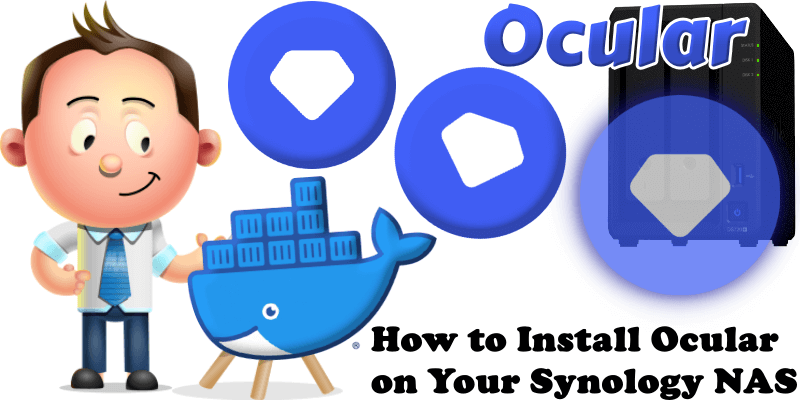
Ocular is a small budgeting app as an alternative to Google sheet’s annual budget planner. Its goal is not to track individual expenses, work with multiple currencies at a time or anything related. Ocular is a simplistic, beautiful and straight-forward budgeting app to track your budget across the years. Easy to use, to get started and to set up. In this step by step guide I will show you how to install Ocular on your Synology NAS using Docker & Portainer.
This guide works perfectly with the latest Ocular v1.13.0 release.
STEP 1
Please Support My work by Making a Donation.
STEP 2
Install Portainer using my step by step guide. If you already have Portainer installed on your Synology NAS, skip this STEP. Attention: Make sure you have installed the latest Portainer version.
STEP 3
Go to File Station and open the docker folder. Inside the docker folder, create one new folder and name it ocular. Follow the instructions in the image below.
Note: Be careful to enter only lowercase, not uppercase letters.
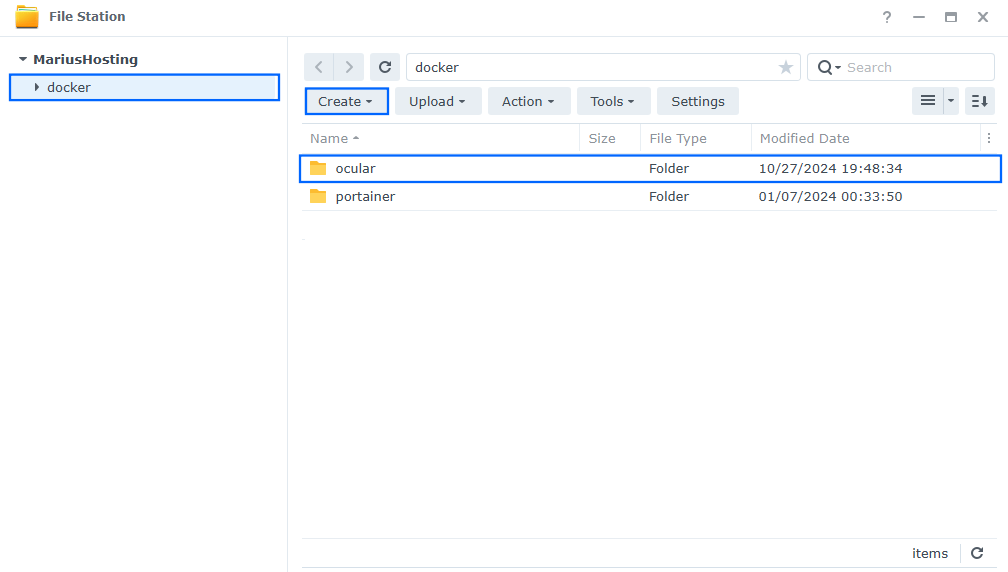
STEP 4
Now create two new folders inside the ocular folder that you have previously created at STEP 3 and name them genesis and nginx. Follow the instructions in the image below.
Note: Be careful to enter only lowercase, not uppercase letters.
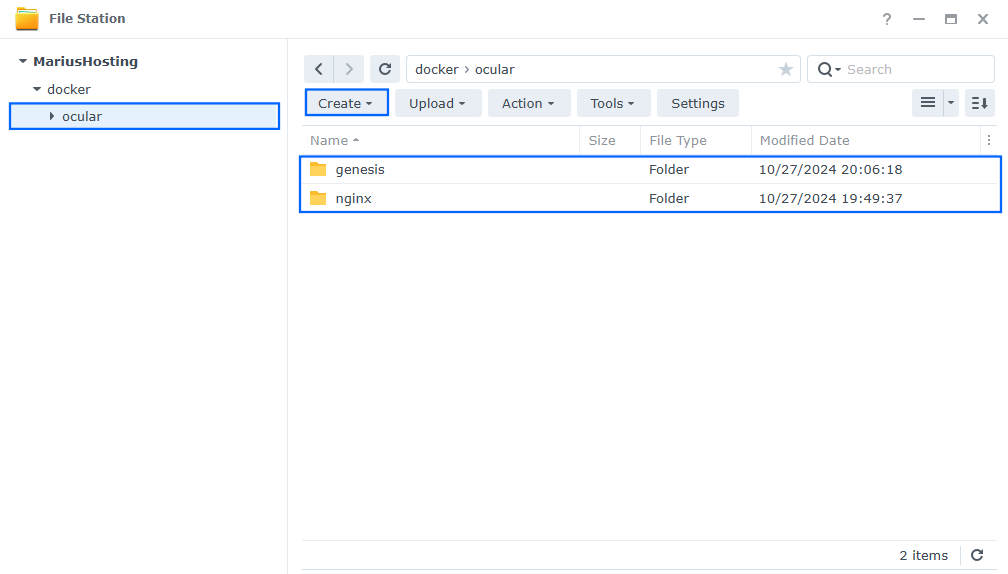
STEP 5
Download (click on the blue link below) and upload the nginx.conf file below in the nginx folder that you have previously created at STEP 4. Follow the instructions in the image below. 🔒Note: Support my work to unlock the password. You can use this password to download any file on mariushosting forever!

STEP 6
Log into Portainer using your username and password. On the left sidebar in Portainer, click on Home then Live connect. Follow the instructions in the image below.

On the left sidebar in Portainer, click on Stacks then + Add stack. Follow the instructions in the image below.

STEP 7
In the Name field type in ocular. Follow the instructions in the image below.
services:
backend:
image: ghcr.io/simonwep/genesis:latest
container_name: Ocular-GENESIS
restart: on-failure:5
volumes:
- /volume1/docker/ocular/genesis:/app/.data:rw
command: start
environment:
GENESIS_PORT: 80
GENESIS_DB_PATH: .data
GENESIS_CREATE_USERS: mariususer!:mariuspass
GENESIS_AUTHORIZED_URIS: true
GENESIS_JWT_SECRET: XaR7SKwPXkU6uC6voLAqKzVWCdFqvmIa
GENESIS_JWT_TOKEN_EXPIRATION: 120960
GENESIS_JWT_COOKIE_ALLOW_HTTP: true
GENESIS_USERNAME_PATTERN: ^[\w]{0,32}$
GENESIS_KEY_PATTERN: ^[\w]{0,32}$
GENESIS_DATA_MAX_SIZE: 512
GENESIS_KEYS_PER_USER: 2
GENESIS_GIN_MODE: release
GENESIS_LOG_MODE: production
frontend:
image: ghcr.io/simonwep/ocular:latest
container_name: Ocular-FRONT
restart: on-failure:5
nginx:
image: nginx:1.24-alpine
restart: on-failure:5
container_name: Ocular-NGINX
healthcheck:
test: ["CMD-SHELL", "nc -z 127.0.0.1 80 || exit 1"]
interval: 10s
timeout: 5s
retries: 3
start_period: 90s
ports:
- 3030:80
volumes:
- /volume1/docker/ocular/nginx/nginx.conf:/etc/nginx/nginx.conf
depends_on:
- backend
- frontend
Note: Before you paste the code above in the Web editor area below, change the values for GENESIS_CREATE_USERS. Type in your own username and your own password. mariususer is an example for a username and mariuspass is an example for a password. You should use your own values and separate the username from the password by the following characters !:
Note: Before you paste the code above in the Web editor area below, change the value for GENESIS_JWT_SECRET. (Generate your own 32 length GENESIS_JWT_SECRET.)
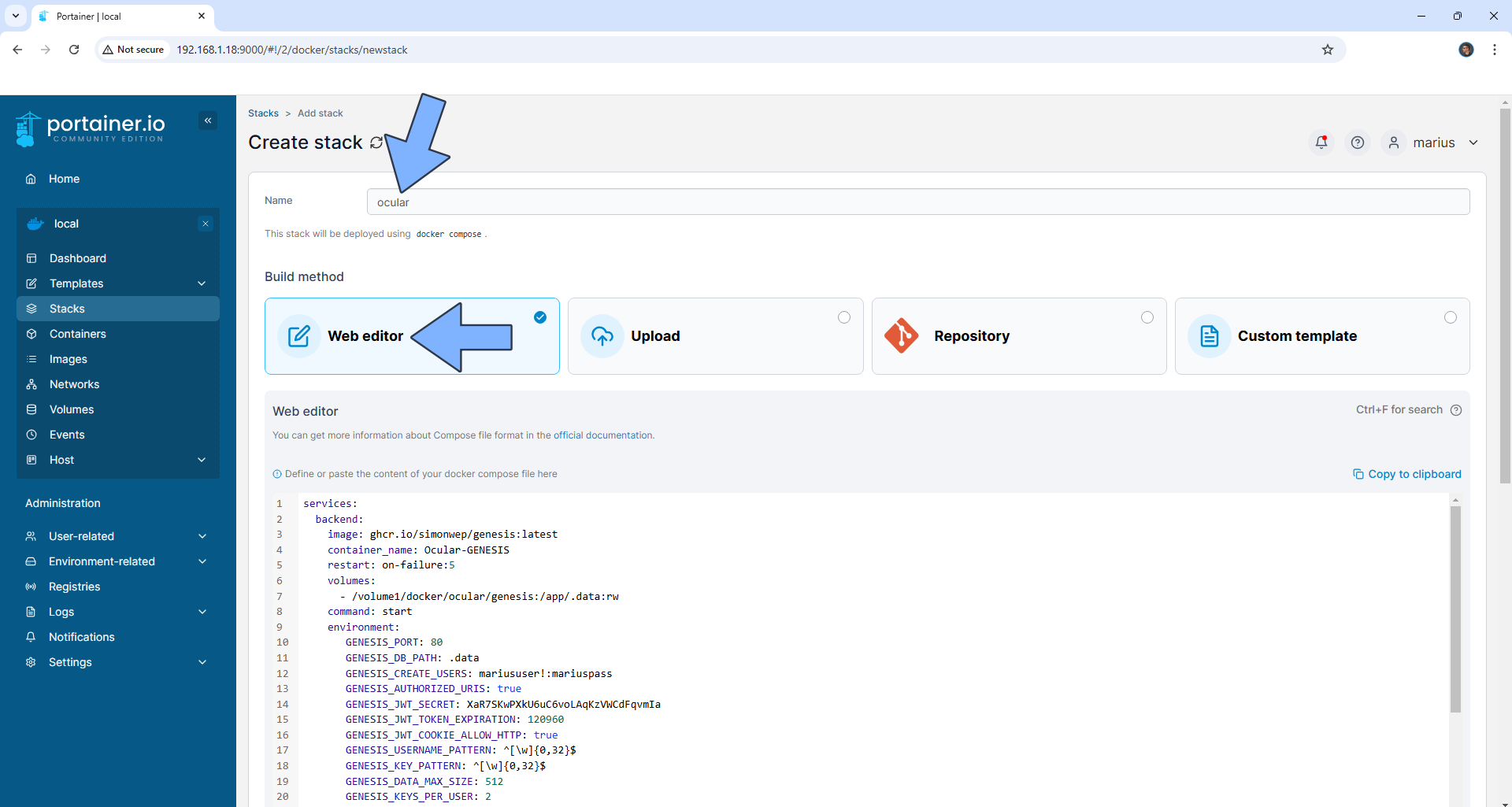
STEP 8
Scroll down on the page until you see a button named Deploy the stack. Click on it. Follow the instructions in the image below. The installation process can take up to a few minutes. It will depend on your Internet speed connection.
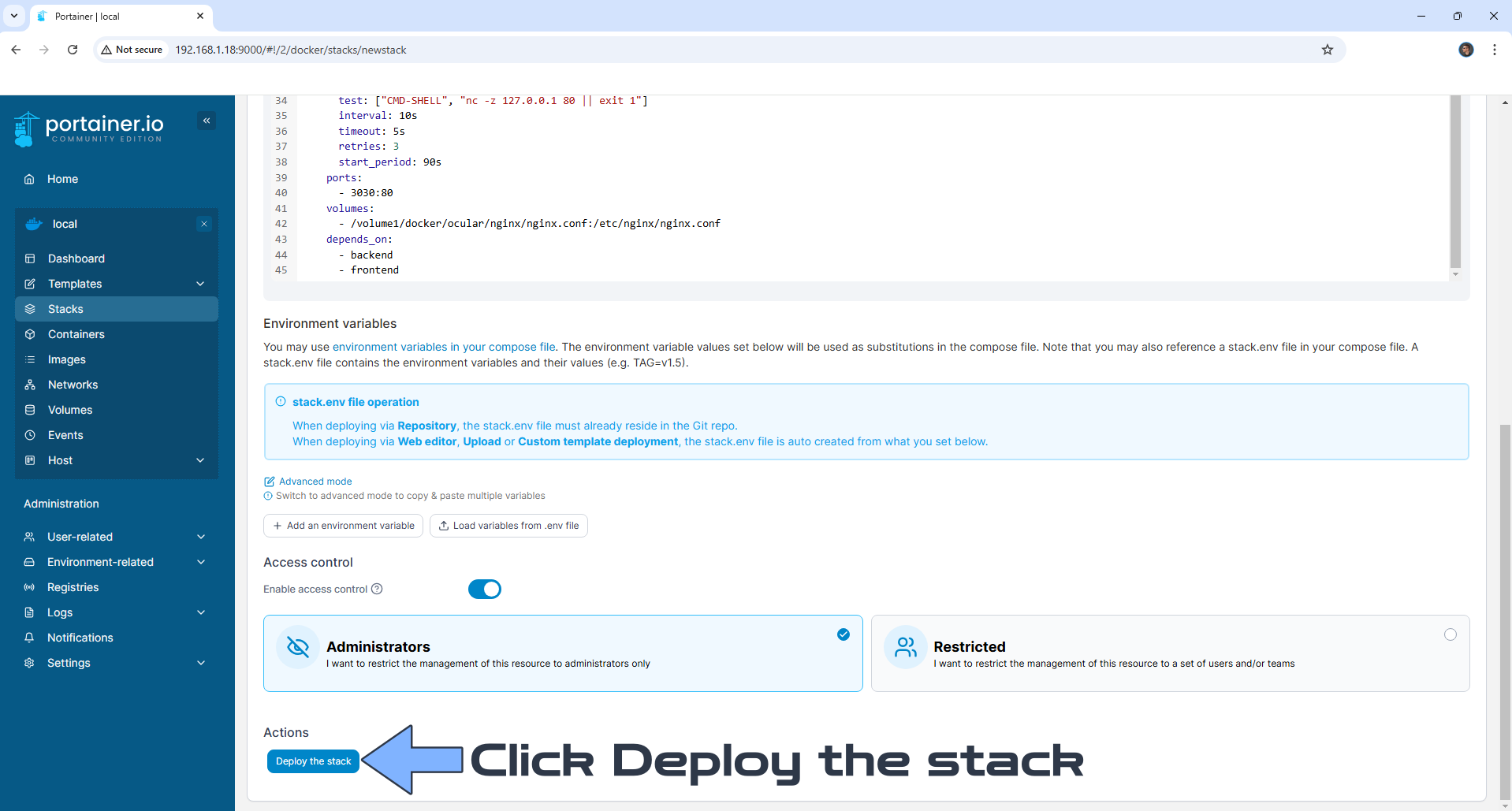
STEP 9
If everything goes right, you will see the following message at the top right of your screen: “Success Stack successfully deployed“.

STEP 10
🟢Please Support My work by Making a Donation. Almost 99,9% of the people that install something using my guides forget to support my work, or just ignore STEP 1. I’ve been very honest about this aspect of my work since the beginning: I don’t run any ADS, I don’t require subscriptions, paid or otherwise, I don’t collect IPs, emails, and I don’t have any referral links from Amazon or other merchants. I also don’t have any POP-UPs or COOKIES. I have repeatedly been told over the years how much I have contributed to the community. It’s something I love doing and have been honest about my passion since the beginning. But I also Need The Community to Support me Back to be able to continue doing this work.
STEP 11
The installation process can take up to a few minutes or less, seconds. It will depend on your Internet speed connection. Now open your browser and type in http://Synology-ip-address:3030 Click on the red cloud icon on the left sidebar. Follow the instructions in the image below.
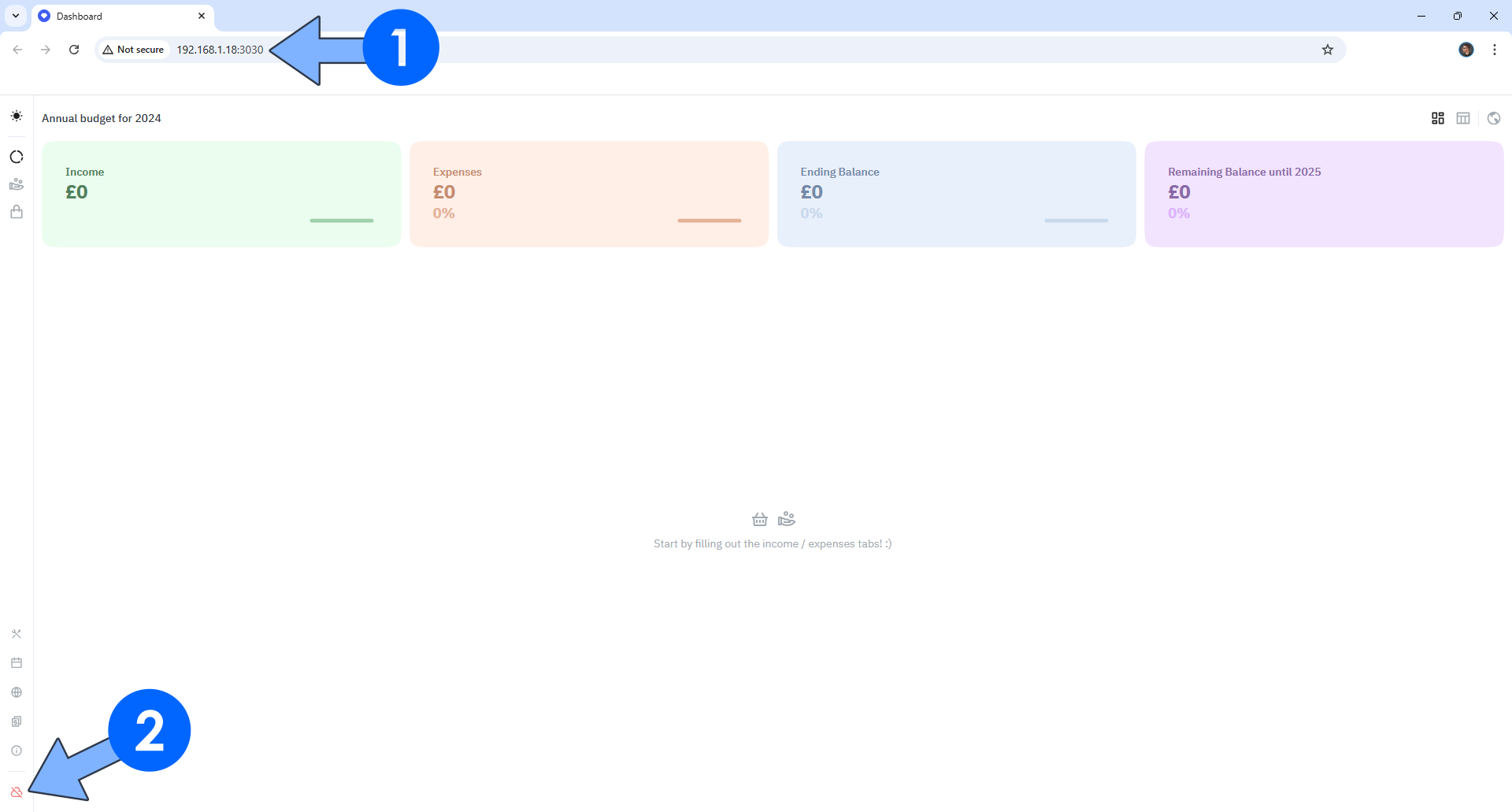
STEP 12
A new pop up window will open. Type in your own Username and Password that you have previously created at STEP 7, then click Sign in. Follow the instructions in the image below.
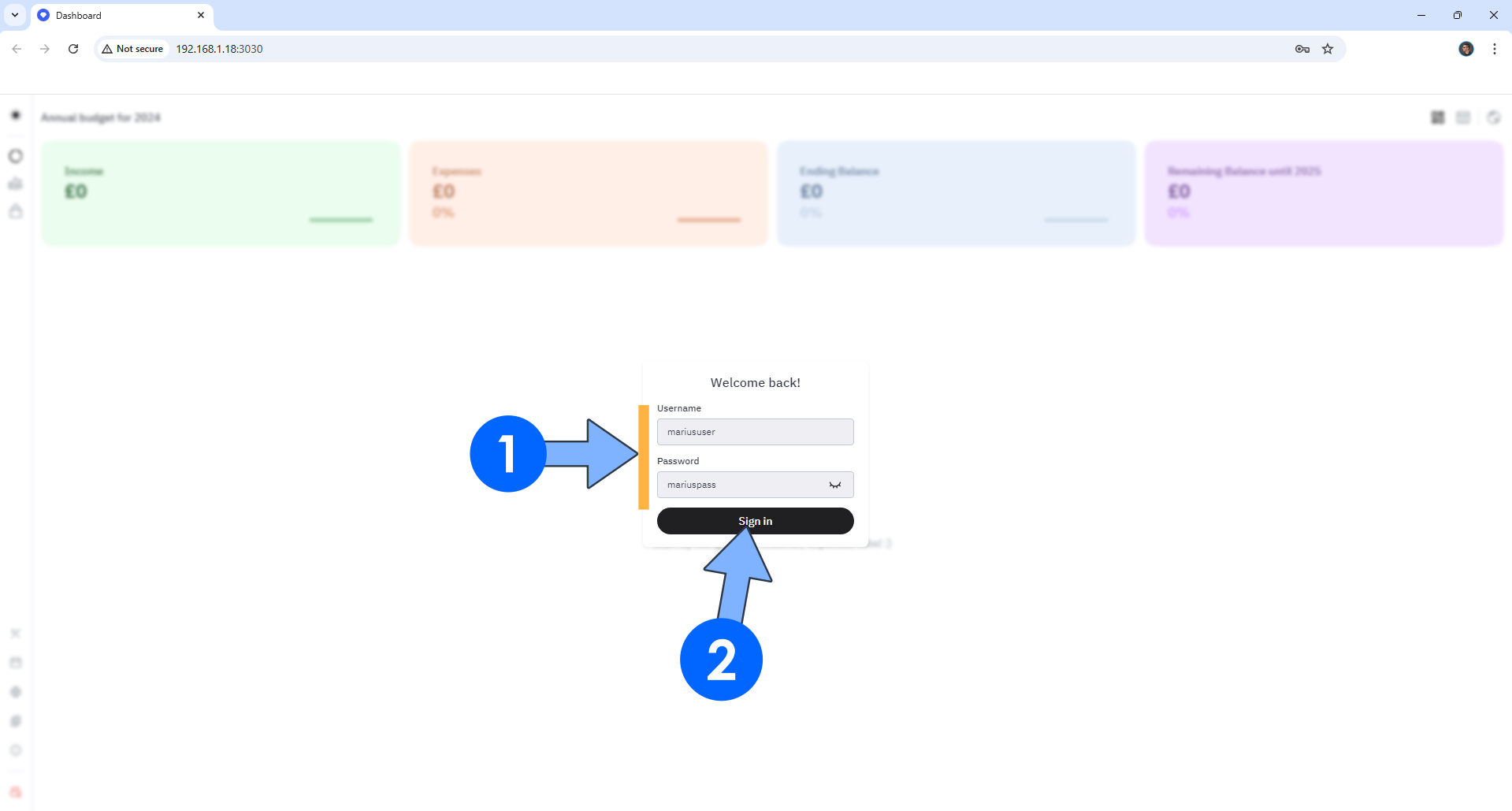
STEP 13
Your cloud icon will be marked in green once you are successfully logged.
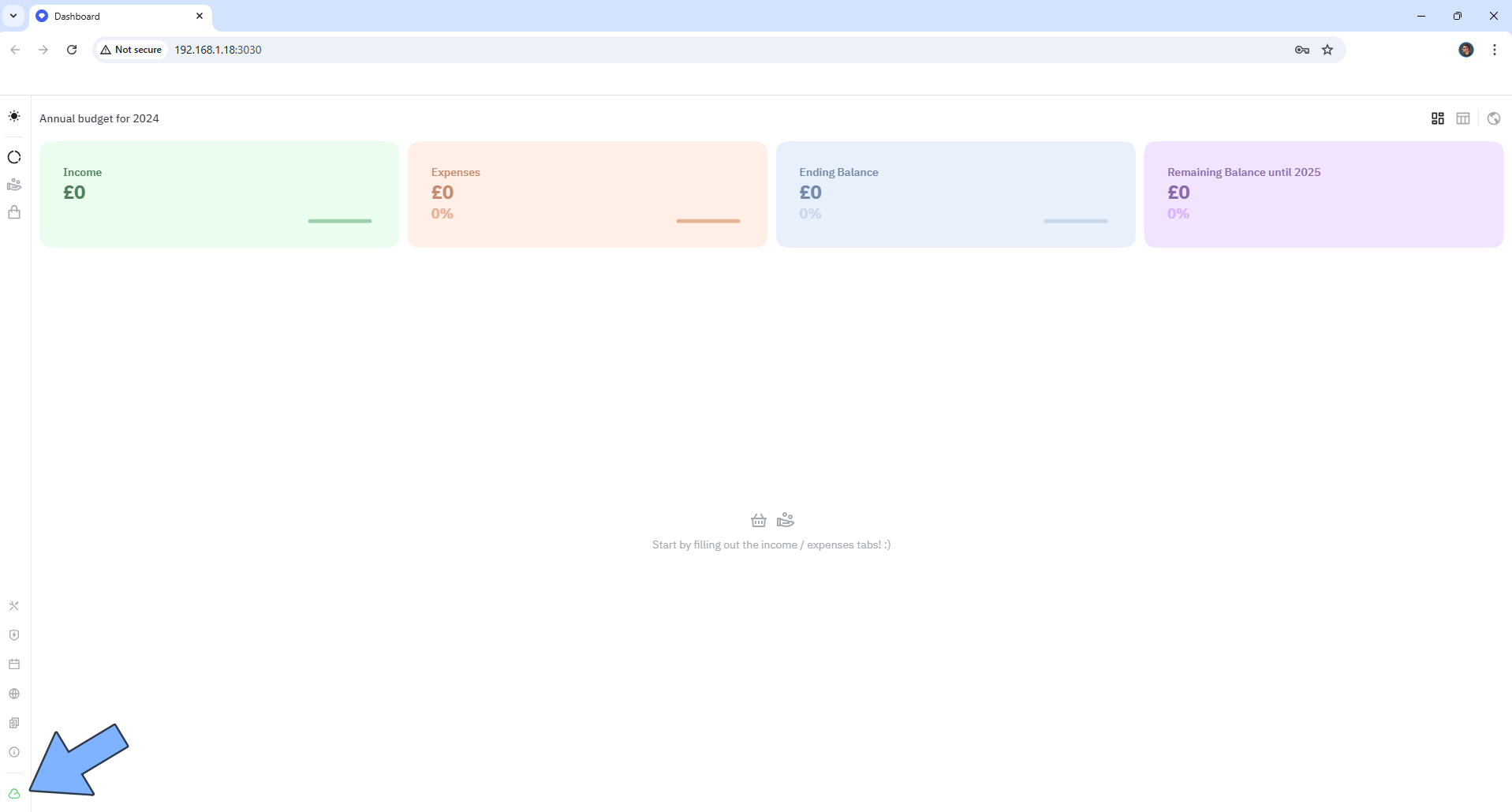
STEP 14
Add your Expenses, change the theme to Dark, change the Currency.
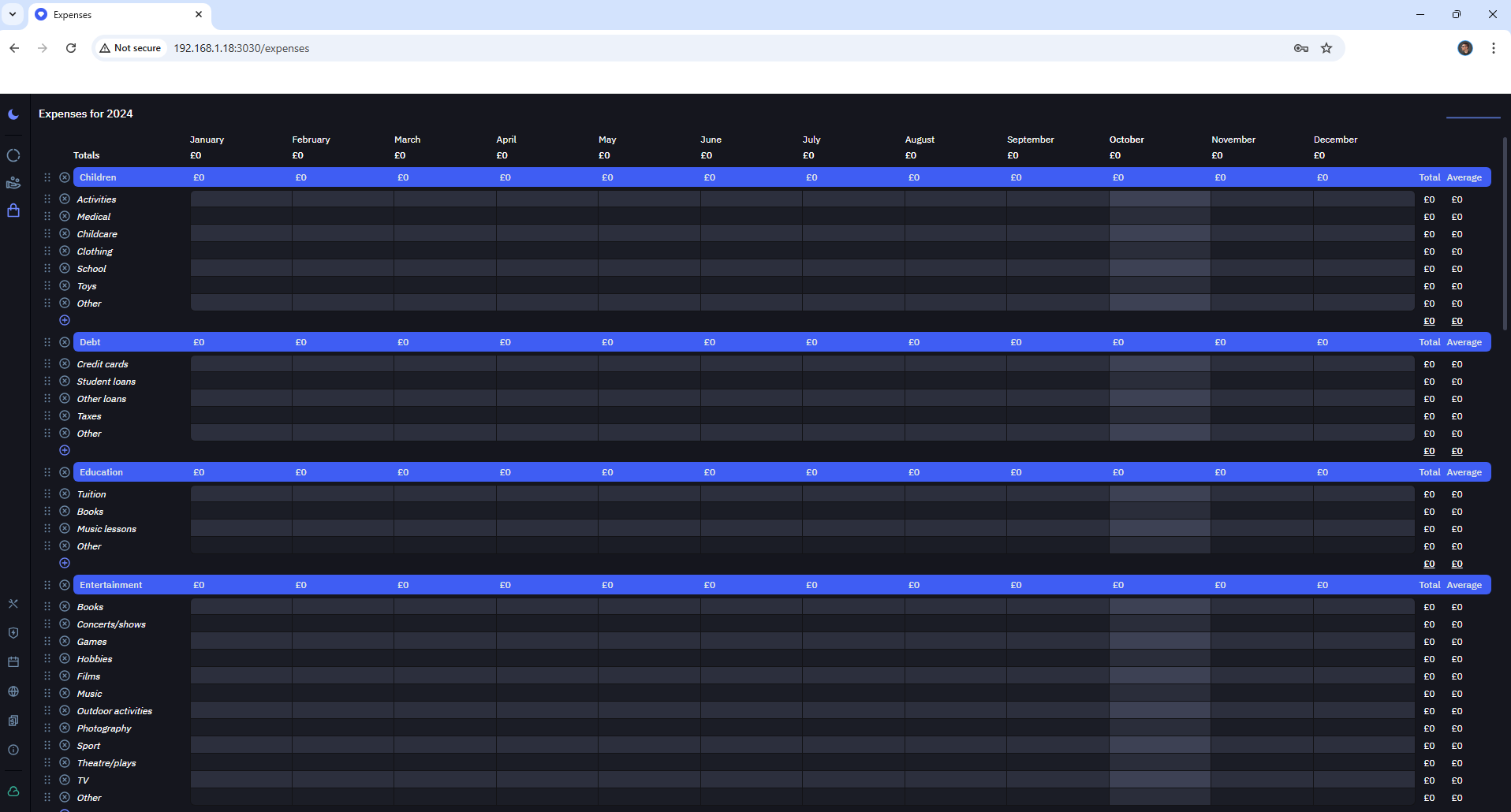
STEP 15
Check your Dashboards!
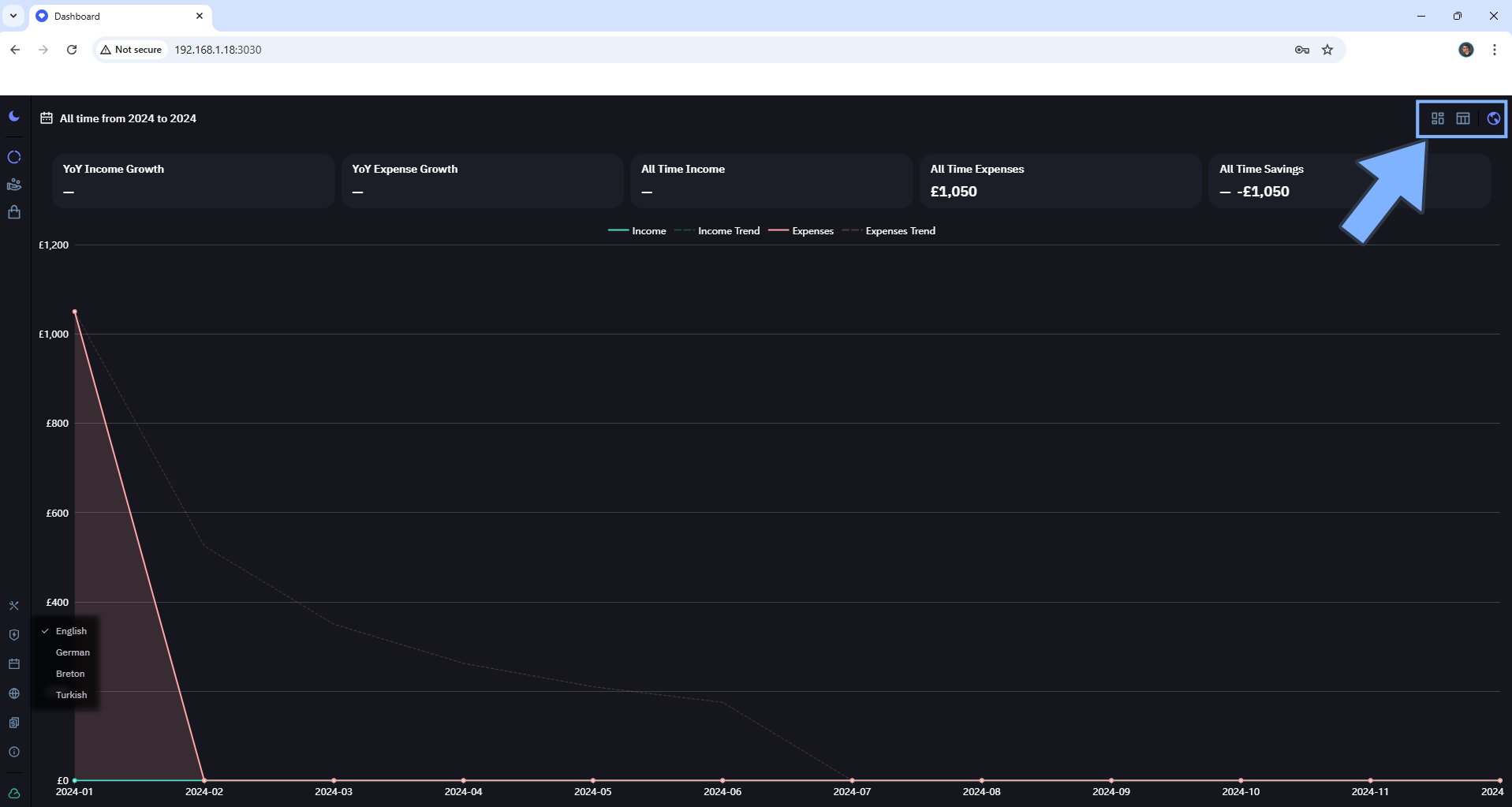
Enjoy Ocular!
If you encounter issues by using this container, make sure to check out the Common Docker issues article.
Note: If you want to run the Ocular container over HTTPS, check How to Run Docker Containers Over HTTPS. In order to make Ocular work via HTTPS, it’s mandatory to activate WebSocket.
Note: Can I run Docker on my Synology NAS? See the supported models.
Note: How to Back Up Docker Containers on your Synology NAS.
Note: Find out how to update the Ocular container with the latest image.
Note: How to Free Disk Space on Your NAS if You Run Docker.
Note: How to Schedule Start & Stop For Docker Containers.
Note: How to Activate Email Notifications.
Note: How to Add Access Control Profile on Your NAS.
Note: How to Change Docker Containers Restart Policy.
Note: How to Use Docker Containers With VPN.
Note: Convert Docker Run Into Docker Compose.
Note: How to Clean Docker.
Note: How to Clean Docker Automatically.
Note: Best Practices When Using Docker and DDNS.
Note: Some Docker Containers Need WebSocket.
Note: Find out the Best NAS Models For Docker.
Note: Activate Gmail SMTP For Docker Containers.
This post was updated on Friday / November 21st, 2025 at 6:21 PM
